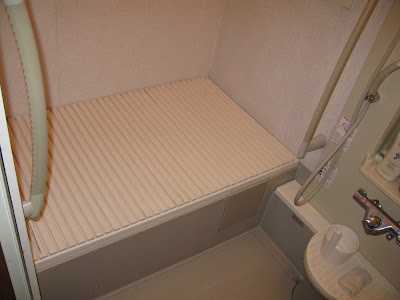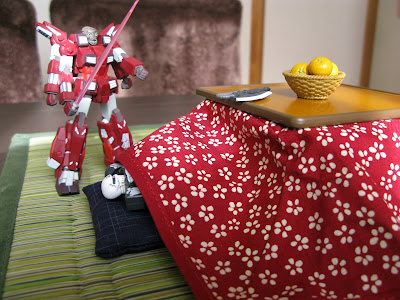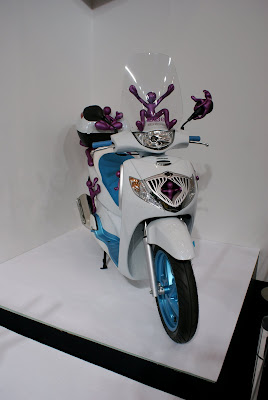We were able to have lunch with Tatsu and his family. He and his family are all doing well. Aya made the lunch and it was very good. His children are getting so big. Hiroto is talking up a storm (in Japanese). Actually I saw some of his learning materials and thought they might be good for me. Sae his daughter is now walking. Both children are keeping them busy.
We actually did a number of things this week, but I neglected to take the camera to any of them. We went to the community center and made airplanes out of thinly slice styrofoam. The class was all in Japanese, but were were able to get buy. There were a number of different shapes we made, from birds to flying squirrels, most flew amazingly well. Below is an image of one of them.
Both Kate and I also had dinner parties, mine was another welcome party, Kate's was a ladies night out. Sorry, no pictures of either.
Now I figured I would explain a little about water conservation in Japan. In general it appears that there is an effort to conserve natural resources. This post will explain a little about water conservation.
First, the toilet:
The toilet has a small sink on the back of it. You can see it below.
When the toilet is flushed the water that fills the tank comes out the faucet for you to wash your hands with. This water will be used anyway, so it makes sense that it be used to wash your hands, rather than use other water to wash your hands.
There are also two flush options 小,大 chisai, okii (small, big) use your imagination to figure out which goes with what, but the point is less water is used when possible.
The only down side to this, it is really, really,....really cold in the winter.
Second, bathing:
The bath takes a lot of water to fill.
First there is a control system for the tub. When you want to take a bath you just push the red button. There are actually two controls, one in the shower room and the other in the kitchen. The red button automatically fills the tub with hot water. It is also possible to set a timer so the tub will fill at a specific time. The yellow button will reheat the water in the tub by pulling water back through the system and heating it, rather than adding more fresh water.
To keep the water warm you put a cover on the tub. It easily rolls up to get out of the way. Of course if you wait too long you can always hit the yellow button again to heat it up.
To save water the family takes turns using the same water. What makes this reasonable is that you actually clean by soaping up and rinsing in the shower beside the tub. The tub itself is used for soaking in not actually cleaning. For the shower you can stand or sit on the stool. pre-soak with the shower or use the buckets. Next soap up and then repeat step one for the rinse. Once you are clean you can relax in the tub. Another nice feature about the room is that the entire room is water proof, once you close the door. This allows the children to go crazy with no concern of everything getting wet.
Since everyone was clean before using the tub, the original water is still clean. I wouldn't drink it, but it is not useless. The washing machine has an attachment on it that allows you to use the tub water to wash clothing. There are two options, wash cycle only, or wash and rinse, with the tub water. Kate was able to get more than two loads using both wash and rinse from one tub full. In the picture below you can see the hose going from the washing machine to the tub.
I am sure with most households making an effort like this, there must be a huge savings in the amount of fresh water used daily in Japan. We are considering bringing at least one of the toilets back to the US to use if possible.
On a different note, I had talked to a few people about how narrow some of the typical roads are in Japan. I snagged a couple of pictures as examples. The first is in Utsunomiya. You can see the road is very narrow and as a result the power line poles are actually in the streets.
The next is a picture (Takanezawa) shows how some of the signs are placed on the road. The sign starts in the road and then angles out of the way. I think the reason for this is the drainage system is at the edge of the road and the sign can not go into it. The sign in the picture is actually a stop sign. They don't look at all like American stop signs. Fortunately I was warned before I got behind the wheel. Unfortunately I was warned by another associate that ran the sign as the driving instructor yelled. He did not have an accident, but he made a point to explain it to all the others.
I will try to add more later about some of the roads.
Finally Liam found a miniature kotatsu at a toy store. He thought it was funny to set up his action figures around it. He explained to me that the red guy tricked the white one into sitting at the table. The white guy fell into the trap and was soon asleep. He is now vulnerable to attack.
Hope everyone has a good week...






























































